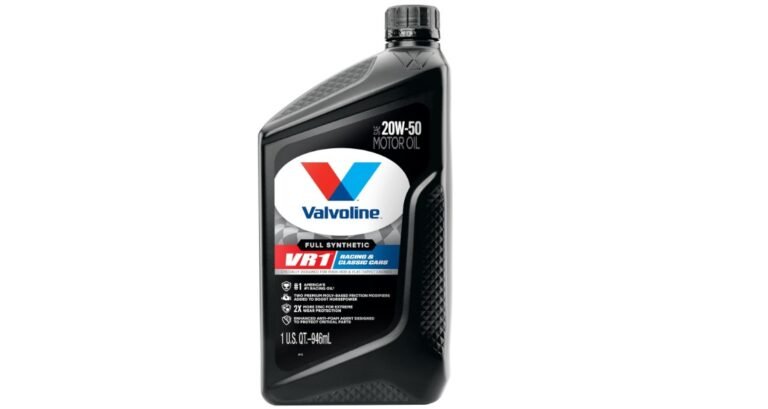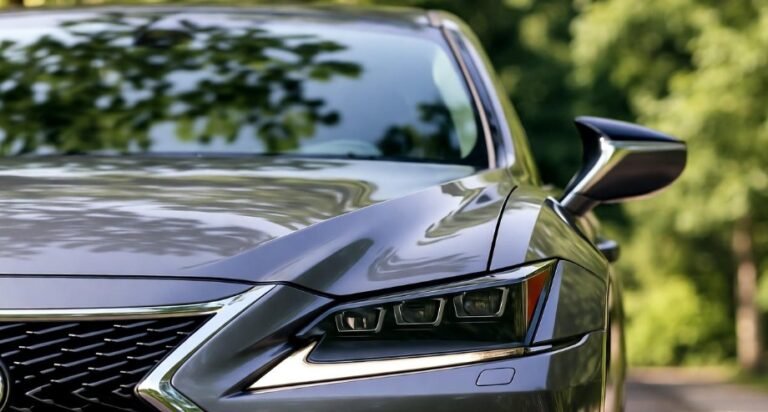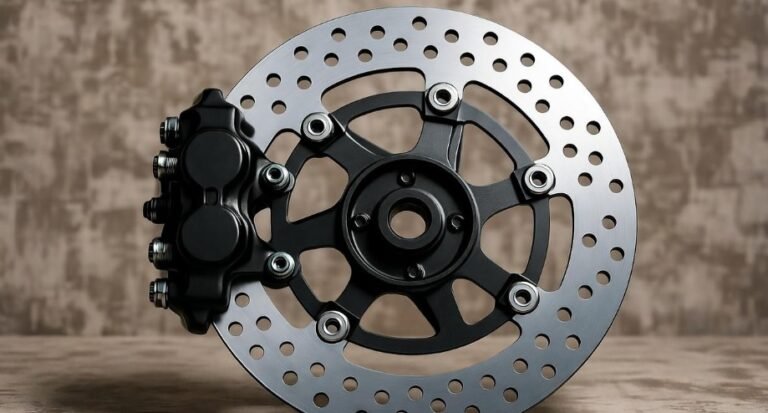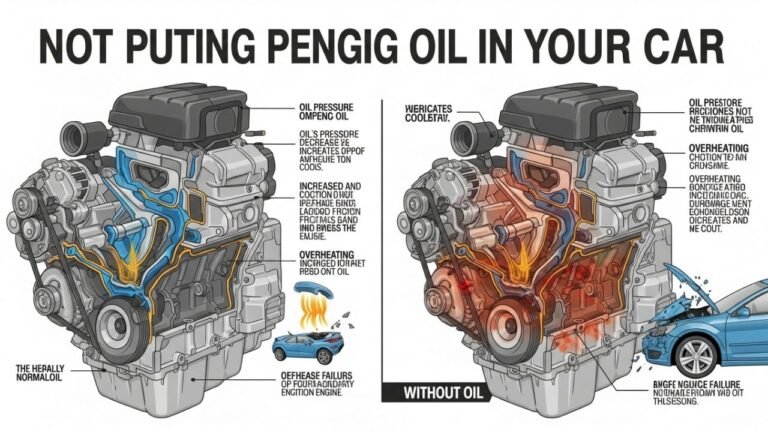Brake Disc Manufacturer in India: Top Choices

Finding a reliable brake disc manufacturer in India is key for vehicle safety. Top Indian manufacturers offer high-quality, durable, and cost-effective brake discs, ensuring optimal stopping power for your vehicle.
Key Takeaways
- Identify leading Indian brake disc manufacturers.
- Understand factors for choosing quality brake discs.
- Explore the benefits of Indian-made brake discs.
- Learn about common brake disc types.
- Discover maintenance tips for brake discs.
When it comes to your vehicle’s safety, nothing is more critical than its braking system. The brake discs, also known as rotors, play a vital role in this system. They are the surfaces that your brake pads clamp onto to create friction, slowing or stopping your car. If you’re a car owner in the USA, perhaps looking at options for replacement parts or simply curious about where quality components come from, you might wonder about the global supply chain. India has emerged as a significant hub for automotive component manufacturing, including high-quality brake discs. This post will guide you through understanding the landscape of brake disc manufacturers in India, helping you identify top choices and factors to consider for the best performance and safety. Let’s dive into how to navigate this important aspect of vehicle maintenance.
Why Choose Indian Brake Disc Manufacturers?
The automotive industry in India has seen remarkable growth, transforming it into a global manufacturing powerhouse. Many Indian companies have invested heavily in research, development, and advanced manufacturing technologies. This has enabled them to produce automotive components that meet stringent international quality standards. For brake discs, this means you can find products that are not only cost-effective but also deliver reliable performance and durability. These manufacturers often leverage economies of scale, producing large volumes which can translate into competitive pricing for consumers worldwide. Furthermore, many Indian manufacturers are certified by international bodies, ensuring their products are safe and compliant with global automotive regulations. Their commitment to innovation also means they are often at the forefront of developing new materials and designs for enhanced braking efficiency and longevity.
Factors to Consider When Selecting Brake Discs
Choosing the right brake discs is crucial for maintaining your vehicle’s safety and performance. It’s not just about brand names; several technical aspects come into play. Understanding these factors will empower you to make an informed decision, whether you’re purchasing directly or relying on a mechanic. The material composition, manufacturing process, and intended use of the vehicle all influence the best choice for your needs.
Material and Composition
The most common material for brake discs is cast iron, specifically grey cast iron. However, the quality of the cast iron can vary significantly. High-quality cast iron used by reputable manufacturers often includes specific additives to improve heat dissipation, resistance to wear, and overall strength. Some performance-oriented vehicles might use other materials like carbon-ceramic composites, which offer superior heat resistance and lighter weight, but these are typically much more expensive and not found in standard replacement parts from mass-market manufacturers. For most daily drivers, a well-made cast iron disc from a reputable Indian brake disc manufacturer will provide excellent service.
Manufacturing Standards and Certifications
When evaluating a brake disc manufacturer, look for certifications that indicate adherence to quality and safety standards. In the automotive world, standards like ISO/TS 16949 (now IATF 16949) are crucial. This certification ensures that the manufacturer has a robust quality management system for automotive production and relevant service organizations. Another important standard to look for is ECE R90, a European regulation that specifies requirements for braking system components on vehicles. While this is a European standard, many global manufacturers, including those in India, design and test their products to meet or exceed these requirements, demonstrating a commitment to international safety benchmarks. Checking for these certifications can give you confidence in the product’s reliability.
Vehicle Application and Type
Brake discs are not one-size-fits-all. They are designed for specific vehicle makes, models, and even trim levels. A disc designed for a lightweight compact car will differ in size, thickness, and material properties from one intended for a heavy-duty truck or a performance sports car. Ensure that any brake disc you consider is explicitly designed for your vehicle. Manufacturers often categorize their products by vehicle application. Some discs are designed for standard OE (Original Equipment) replacement, while others are ‘performance’ or ‘heavy-duty’ variants, offering improved cooling, durability, or stopping power for more demanding driving conditions. For everyday driving, OE-equivalent discs are usually sufficient, providing a balance of performance and value.
Heat Dissipation and Cooling
Braking generates a tremendous amount of heat. Effective heat dissipation is vital to prevent brake fade (a loss of braking effectiveness due to overheating) and premature wear. Many modern brake discs feature designs that improve airflow and cooling. These can include internal vanes within the disc (vented discs) that channel air, or cross-drilled holes and slots on the friction surface. Vented discs are common on the front wheels of most cars, as they bear the brunt of the braking force. Cross-drilled and slotted discs can help evacuate gases produced during braking and keep the surface cleaner, potentially improving wet braking performance and reducing heat buildup, though they can sometimes lead to slightly faster pad wear and increased noise.
Top Brake Disc Manufacturers in India
India boasts a vibrant automotive component manufacturing sector, with several companies making significant contributions to the global brake disc market. These manufacturers are known for their quality, innovation, and competitive pricing. Here are some of the prominent players you might encounter:
1. Rane Brake Linings Ltd.
Rane Brake Linings Ltd. is a well-respected name in the Indian automotive component industry, part of the larger Rane Group. They are a leading manufacturer of friction materials, including brake pads and brake shoes, and also produce brake drums and discs. Their products are known for their reliability and are supplied to both the Indian aftermarket and to major OEMs. Rane focuses on advanced manufacturing processes and stringent quality control to ensure their components meet global standards. Their commitment to research and development allows them to offer innovative solutions for various vehicle types.
2. Brembo (India Operations)
While Brembo is an Italian company, it has a significant manufacturing presence in India, producing high-performance braking systems. Brembo is synonymous with premium quality and cutting-edge technology in braking. Their Indian facilities contribute to their global supply chain, offering advanced brake discs, calipers, and other braking components. For drivers seeking top-tier performance and assured quality, Brembo products, manufactured or supplied through their Indian operations, are a strong consideration, though often at a higher price point.
3. Taneja Aerospace and Aviation Ltd. (TAAL) – Brake Division
TAAL is another significant player, known for its expertise in aerospace and now extending its precision manufacturing capabilities to automotive components, including brake discs. They focus on high-quality materials and precise engineering, aiming to meet the demanding requirements of the automotive industry. TAAL’s approach often emphasizes innovation and adherence to rigorous quality standards, making them a reliable choice for both OEM and aftermarket applications. Their focus on precision is a key differentiator.
4. Endurance Technologies Ltd.
Endurance Technologies is a prominent Indian manufacturer of automotive components, specializing in aluminum casting and advanced braking systems. They are a major supplier to leading two-wheeler and passenger car manufacturers in India and globally. Their product portfolio includes brake discs, brake hubs, and other related components. Endurance Technologies is recognized for its robust R&D, state-of-the-art manufacturing facilities, and commitment to quality, making them a trusted name in the industry.
5. Bosch (India)
While Bosch is a German multinational, its Indian subsidiary, Bosch Ltd., is a major player in the automotive component market in India. Bosch manufactures a wide range of automotive parts, including sophisticated braking systems and their components like brake discs. They are known for their technological expertise and high-quality standards, supplying extensively to both OEMs and the aftermarket. Choosing Bosch means opting for globally recognized quality and engineering excellence, often with advanced features.
It’s worth noting that many other reputable Indian manufacturers contribute to the brake disc market, often supplying directly to vehicle manufacturers or as part of larger automotive groups. The key is to research specific brands and their product lines for your vehicle.
Understanding Different Types of Brake Discs
Brake discs are designed with different characteristics to suit various driving needs and vehicle types. Understanding these variations can help you choose the most appropriate option for your car and driving style. Here’s a look at the common types:
- Solid Brake Discs: These are the simplest and most common type, often found on the rear wheels of passenger cars and on smaller, lighter vehicles. They consist of a solid cast-iron disc with no internal vanes. They are generally less expensive to manufacture but have lower heat dissipation capabilities compared to vented discs.
- Vented Brake Discs: These discs have internal vanes that create channels for air to flow through. This significantly improves cooling and heat dissipation, making them ideal for heavier vehicles or those with higher braking demands, such as front wheels on most cars.
- Drilled Brake Discs: These discs have holes drilled through their friction surfaces. The holes help to vent gases produced during braking, which can improve initial bite and reduce the risk of brake fade. They can also help to shed water in wet conditions. However, the drilling process can create stress points, potentially making them more susceptible to cracking under extreme conditions, and they can wear brake pads slightly faster.
- Slotted Brake Discs: Instead of holes, these discs have slots machined into their surface. These slots help to sweep away dust and gases from the pad surface, maintaining consistent friction. They also help keep the pad surface clean, improving performance in wet conditions and providing a more consistent feel. Slotted discs are generally more durable than drilled discs and offer a good balance of performance and longevity.
- Drilled and Slotted Brake Discs: These combine the features of both drilled and slotted designs, offering enhanced performance in terms of cooling, gas evacuation, and water dispersion. They are often favored by performance enthusiasts for track use or aggressive driving, but they can also be more expensive and may contribute to faster pad wear.
Brake Disc Manufacturing Process Overview
The manufacturing of brake discs is a precise process that requires careful control over materials and techniques to ensure safety and performance. Reputable Indian brake disc manufacturers adhere to strict protocols to deliver high-quality products. Here’s a simplified look at how it’s typically done:
- Material Selection: High-quality cast iron is the primary material. Specific grades are chosen for their properties like thermal conductivity, tensile strength, and resistance to wear and warping. Sometimes, other elements are added to the iron alloy to enhance these characteristics.
- Melting and Pouring: The selected iron is melted in furnaces to a specific temperature. It is then poured into molds that are shaped according to the desired brake disc design (solid, vented, etc.). The mold design is critical for the initial shape and internal structure of the disc.
- Cooling and Solidification: The molten iron is allowed to cool and solidify within the molds. The cooling rate is carefully controlled to prevent internal stresses and ensure the desired microstructure of the metal.
- Demolding and Rough Machining: Once cooled, the cast brake discs are removed from the molds. Any excess material (like flash) is trimmed off, and the discs undergo an initial rough machining process to bring them closer to their final dimensions.
- Heat Treatment (Optional but common): Some discs may undergo a heat treatment process to further refine their properties, such as increasing hardness or relieving internal stresses.
- Precision Machining: This is a critical stage where the friction surfaces are machined to achieve a perfectly flat and smooth finish. For vented discs, the vanes are formed, and for drilled or slotted discs, these features are precisely cut into the surface. The final machining ensures the disc is balanced and runs true.
- Quality Control and Inspection: Throughout the process, and especially at the final stage, discs are subjected to rigorous quality checks. This includes dimensional checks, hardness testing, surface finish inspection, material composition analysis, and often non-destructive testing (like ultrasonic or magnetic particle inspection) to detect any internal flaws. Some discs may also be spin-tested to ensure they can withstand rotational forces.
- Coating and Packaging: Many brake discs are coated with a protective layer (often a high-temperature paint or electroplated finish) to prevent rust during transit and storage. They are then packaged securely for distribution.
The precision and consistency required in each step are what differentiate high-quality manufacturers from those producing inferior products.
Brake Disc Performance and Longevity
The performance and longevity of brake discs are influenced by a combination of manufacturing quality, material composition, and how they are used and maintained. A well-made brake disc from a reputable Indian manufacturer should offer a good balance of stopping power and durability for its intended application.
Factors Affecting Performance
- Material Quality: As mentioned, the grade and composition of the cast iron significantly impact how well the disc handles heat and friction.
- Design Features: Vented, drilled, or slotted designs improve cooling and gas/water evacuation, leading to more consistent braking performance, especially under heavy use.
- Surface Finish: A precisely machined surface ensures good contact with the brake pads and contributes to smooth braking.
- Matching with Pads: The type of brake pad used in conjunction with the disc is crucial. A high-performance pad might not perform optimally on a standard disc, and vice-versa.
Factors Affecting Longevity
- Driving Habits: Frequent hard braking, aggressive acceleration followed by sudden stops, and riding the brakes (keeping your foot on the pedal while descending hills) will wear out brake discs faster.
- Environmental Conditions: Exposure to moisture, road salt, and debris can accelerate corrosion and wear.
- Overheating: Repeated overheating can cause the disc material to warp or develop stress cracks, significantly reducing its lifespan.
- Maintenance: Ensuring that brake pads are replaced when worn and that the braking system is free of contaminants can help prolong disc life.
For a typical driver, a standard brake disc from a quality Indian manufacturer should last anywhere from 30,000 to 70,000 miles (approximately 50,000 to 110,000 km), depending heavily on the factors listed above. However, it’s essential to have them inspected regularly by a qualified mechanic.
Pro Tip: Always replace brake discs in pairs (both front or both rear) to ensure balanced braking performance and even wear.
Brake Disc Maintenance and Inspection
Regular maintenance and inspection of your brake discs are vital for ensuring your safety on the road. Catching potential issues early can prevent more serious and costly problems down the line. Here’s what you should be aware of:
When to Inspect Your Brake Discs
- Every Oil Change: It’s a good practice to have your mechanic glance at your brake discs during routine oil changes (typically every 5,000 to 7,500 miles or as recommended by your vehicle manufacturer).
- When Replacing Brake Pads: Brake pads and discs are a system. When you replace your brake pads, it’s the perfect time to inspect the discs for wear, damage, or warping.
- When You Notice Symptoms: Any changes in braking feel or sound are strong indicators that your brakes need immediate attention.
Signs of Worn or Damaged Brake Discs
Pay attention to these warning signs:
- Squealing or Grinding Noises: A high-pitched squeal when braking can indicate wear indicators on the pads scraping the disc. A deep grinding noise often means the pads have worn down completely, and the metal backing plate is directly contacting the disc, causing severe damage.
- Vibrations or Pulsations: If you feel a shudder or pulsation through the brake pedal or steering wheel when you apply the brakes, it’s often a sign that the brake discs are warped due to overheating.
- Reduced Brake Responsiveness: If your brake pedal feels soft, spongy, or you need to press it further than usual to achieve the same stopping power, there might be an issue with the brake fluid, pads, or discs.
- Visual Indicators: Look for deep grooves, scoring, cracks, or a noticeable “lip” around the outer edge of the disc. A bluish tint can indicate overheating.
What a Mechanic Will Check:
A professional mechanic will typically check:
- Thickness: Brake discs have a minimum thickness specification (often stamped on the disc itself or found in the vehicle’s service manual). If a disc is worn below this minimum thickness, it must be replaced.
- Runout (Warping): Using a dial indicator, a mechanic can measure how true the disc spins. Excessive runout indicates warping.
- Surface Condition: They will look for scoring, cracks, glazing, rust, and uneven wear patterns.
- Heat Spots: Discoloration can indicate areas that have overheated, which can lead to warping and reduced braking efficiency.
Proper brake disc maintenance not only ensures your safety but also can prevent damage to other braking system components, saving you money in the long run. For guidance on U.S. automotive maintenance standards and regulations, the Federal Motor Carrier Safety Administration (FMCSA) provides valuable information, particularly for commercial vehicles, which often mirrors best practices for all roadworthy automobiles.
Brake Disc Manufacturers in India vs. Other Regions
When considering brake discs, you have a global market to choose from. While many countries manufacture these critical components, Indian manufacturers offer a compelling value proposition, especially for those looking for quality at a competitive price.
| Attribute | Indian Manufacturers | European Manufacturers | Chinese Manufacturers | USA Manufacturers |
|---|---|---|---|---|
| Quality & Standards | High to very high, meeting international standards (IATF 16949, ECE R90). Strong OEM suppliers. | Very high, known for premium quality and innovation. Strict adherence to European standards. | Variable, ranging from low to high. Quality can be inconsistent; careful selection is needed. | High to very high, often focused on performance and specific market needs. |
| Price Point | Competitive to mid-range. Offers excellent value for money. | Premium to high. Generally the most expensive option. | Low to mid-range. Can be very cost-effective but quality varies. | Mid-range to high, depending on brand and specialization. |
| Technology & Innovation | Growing rapidly, with significant investment in R&D. | Leaders in innovation, especially for high-performance and advanced braking systems. | Increasingly investing in R&D, but often still catching up to established players. | Strong in performance and aftermarket specialization. |
| Availability | Increasingly available globally through aftermarket channels and exports. | Widely available globally, especially for European and high-end vehicles. | Very high global availability, often found in budget aftermarket parts. | Strong presence in the domestic market and aftermarket, available internationally. |
| Reputation | Strong and growing reputation for reliability and cost-effectiveness. | Excellent reputation for quality, performance, and durability. | Mixed reputation; often perceived as budget-friendly but quality concerns exist for some brands. | Solid reputation, particularly for specialized and high-performance parts. |
For many car owners in the USA, sourcing brake components from reputable Indian manufacturers can provide a smart balance. You get access to advanced manufacturing processes and quality control that meet global expectations, often at a more accessible price point than European or specialized USA brands. It’s about finding that sweet spot where reliability, performance, and affordability meet, and Indian brake disc manufacturers are increasingly delivering on this.
Frequently Asked Questions (FAQ)
Q1: How do I know if my brake discs need replacing?
You should consider replacing your brake discs if you notice vibrations when braking, hear grinding or excessive squealing noises, see a significant lip around the edge of the disc, or if a mechanic measures them to be below their minimum thickness specification.
Q2: Can I just replace the brake pads and ignore the discs?
While sometimes possible if the discs are in very good condition, it’s generally recommended to replace brake discs when replacing brake pads. New pads on worn or warped discs won’t perform optimally, can wear out prematurely, and may not bed in correctly, compromising your braking system’s effectiveness.
Q3: How long do brake discs typically last?
Brake disc lifespan varies greatly depending on driving habits, vehicle weight, and environmental conditions. For most passenger cars, they can last between 30,000 to 70,000 miles (50,000 to 110,000 km). Regular inspections are key to determining their actual condition.
Q4: Are “cheap” brake discs from India worth the risk?
Not all budget parts are the same. While Indian manufacturers offer competitive pricing, it’s crucial to choose reputable brands that adhere to international quality standards. Extremely cheap, unbranded discs may compromise safety and wear out much faster, costing more in the long run.
Q5: What is the difference between drilled and slotted brake discs?
Drilled discs have holes to help vent gases and dissipate heat, improving initial stopping power. Slotted discs have grooves to sweep away dust and water, maintaining consistent friction. Both can improve performance, but may also increase wear on brake pads.
Q6: Do I need to “bed in” new brake discs and pads?
Yes, “bedding in” is a process that properly mates the new brake pads to the brake discs, ensuring optimal performance and longevity. The specific procedure varies by manufacturer but typically involves a series of moderate to firm stops from moderate speeds, followed by cooling periods.
Conclusion
Navigating the world of automotive parts can seem daunting, but understanding the key players and considerations can make all the difference. Indian brake disc manufacturers have established themselves as reliable sources of high-quality, cost-effective components that meet global automotive standards. By considering factors like material quality, manufacturing certifications, and the specific needs of your vehicle, you can make an informed choice. Whether you’re performing routine maintenance or upgrading your braking system, opting for a reputable brake disc manufacturer in India can provide the safety, performance, and value you need. Remember, your brakes are your most critical safety system, so always prioritize quality and expert inspection.






